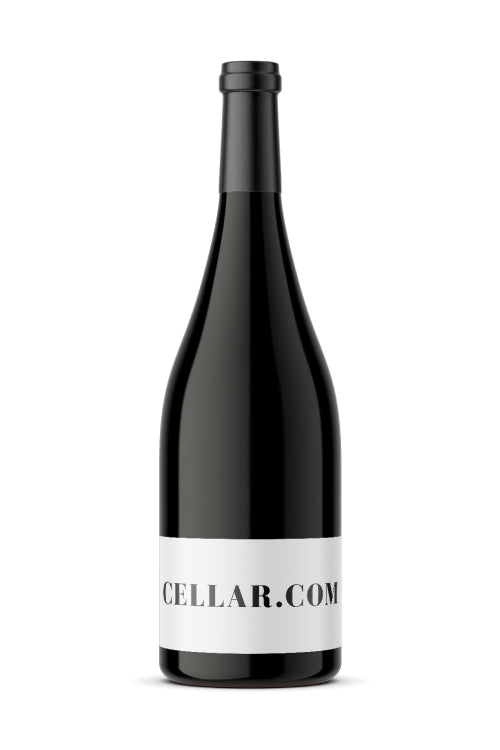1
/
of
1
Haut Brion - 1990 (750ml)
Haut Brion - 1990 (750ml)
Regular price
$899.99
Sale price
$899.99
Regular price
$1,199.99
Unit price
/
per
1990: In terms of the brilliant complexity and nobility of the aromatics, scorched earth, black currants, plums, charcoal, cedar, and spices, the 1990 offers an aromatic explosion that is unparalleled. It is always fascinating to taste this wine next to the 1989, which is a monumental effort, but much more backward and denser, without the aromatic complexity of the 1990. The 1990 put on weight after bottling, and is currently rich, full-bodied, opulent, even flamboyant by Haut Brion’s standards. It is an incredible expression of a noble terroir in a top vintage. While it has been fully mature for a number of years, it does not reveal any bricking at the edge, and I suspect it will stay at this level for another 10-15 years ... but why wait? It is irresistible now. Release price: ($1200.00/case)
Robert Parker - 98 points
Robert Parker - 98 points
Share :

- varietal
- Region
- Sub - Region
- Type
- Reviews
Product Review
1990: In terms of the brilliant complexity and nobility of the aromatics, scorched earth, black currants, plums, charcoal, cedar, and spices, the 1990 offers an aromatic explosion that is unparalleled. It is always fascinating to taste this wine next to the 1989, which is a monumental effort, but much more backward and denser, without the aromatic complexity of the 1990. The 1990 put on weight after bottling, and is currently rich, full-bodied, opulent, even flamboyant by Haut Brion’s standards. It is an incredible expression of a noble terroir in a top vintage. While it has been fully mature for a number of years, it does not reveal any bricking at the edge, and I suspect it will stay at this level for another 10-15 years ... but why wait? It is irresistible now. Release price: ($1200.00/case)
Product Score
98
Cabernet Sauvignon is one of the most prominent dark-skinned grape varieties except Merlot in terms of area under vines, but which comprises our largest selection of wines. Grown in just about every wine producing region and climate, Cabernet Sauvignon can express a huge range of aromas, from green peppers in cool climates through to dark jammy fruit in hot regions. Common aromas include blackcurrants, mint, graphite, and forest floor, to name a few. Maturation in small oak barrels can develop a complex range of aromas from cedar wood, cigar box and tobacco to eucalyptus and undergrowth. Cabernet Sauvignon’s success is partly due to its ability to adapt to a range of soils and climates. It is the main constituent of the Bordeaux blend in the revered communes of Pauillac, St. Estephe and St. Julien, and has achieved equal success in California’s Napa Valley. It is grown extensively throughout Southern Australia, with some outstanding examples from the Terra Rossa soil of Coonawarra. Cabernet Sauvignon also plays an increasing role in Tuscany, Italy, where it is blended with native varieties such as Sangiovese to produce the Super Tuscans.
Located in South West France, Bordeaux is one of the World’s most important wine producing regions. The Gironde estuary and its two tributaries, the Garonne and Dordogne, splits the region into the ‘left bank’ and ‘right bank’. The left bank, on the west side of the Gironde, consists of the Médoc and Graves, while Pomerol and St. Emilion are located on the right bank. In between the Garonne and Dordogne is the Entre-Deaux-Mers region, French for 'between two seas'. From north to south the Médoc includes the famous classed growth chateaux in the communes of St. Estephe, Paulliac, St.Julien, and Margaux. The Graves and it’s enclave Pessac-Léognan make both red and white wine. While those of Pessac- Léognan’s are dry, Sauternes and Barsac make world-famous sweet whites. Although Bordeaux makes some of the world’s most expsenive wines, less expensive but good value alternatives come from Moulis and Listrac on the left and Bourg and Blaye on the right offer less expensive wines for earlier consumption.
Graves and its new (as of 1987) sub-region, Pessac-Leognan, is one of the most important districts of Bordeaux for both red and white wine, and where the earliest estates – see Chateau Haut-Brion, La Mission-Haut-Brion, and Pape-Clément – were established. Named after its soil type, gravel in French, Graves has particularly good drainage on which mainly Cabernet Sauvignon, as well as smaller amounts over Merlot and Cabernet Franc, is grown. Cabernet Sauvignon produces particularly good fruit on these soils and is able to transit its terroir with distinctive mineral aromas. The dry whites wines are made from a blend of Semillon and Sauvignon Blanc, the latter of which must make up at least a quarter of the blend. Most are fermented and matured in oak, of which the best examples benefit from at least a decade in the bottle.
Red wine is wine made from dark-coloured grape varieties. The color of red differs based on the grapes variety or varieties used.Interestingly, black grapes yield a juice that is greenish-white. The actual red color comes from anthocyan pigments (also called anthocyanins) from the skin of the grape (exceptions are the relatively uncommon teinturier varieties, which produce a red colored juice). Most of the production centers around the extraction of color and flavor from the grape skin.


